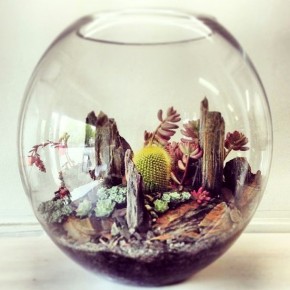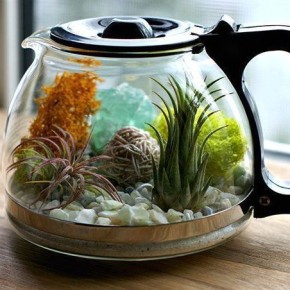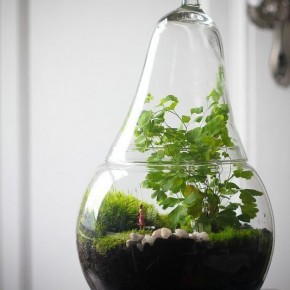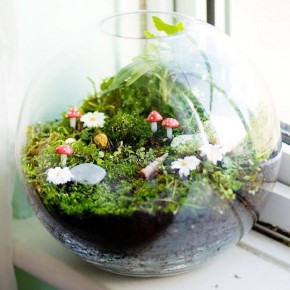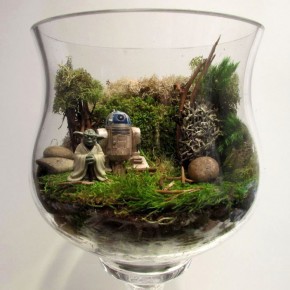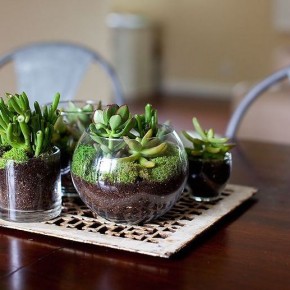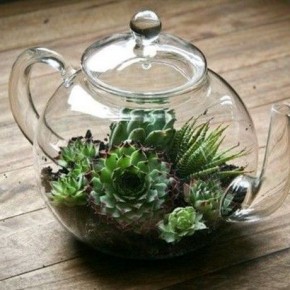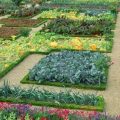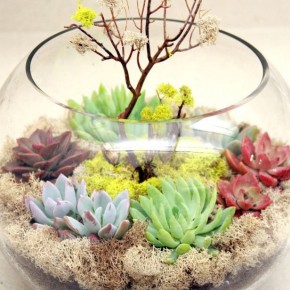
How to make a florarium by yourself
A florarium or plant terrarium isA small home greenhouse, a transparent container of glass or plastic, inside which grow plants. Dry air in the winter season, lack of lighting, cold on the windowsill from the windowpane and lack of time for regular maintenance often put an end to the dream of having your own tropical garden with hygrophilous and thermophilic species. It is the florarium - the ideal solution for those who love exotic plants, but the climatic conditions of an ordinary city apartment do not have to their breeding. Content:
What is the Florarium?
As a rule, the florarium is made of glass ordense translucent plastic, also there are completely wooden models or combined, with transparent inserts. Unlike the terrarium, the florarium necessarily has a narrowed inlet at the top or side to provide a microclimate inside the container. Often this hole is completely covered with a lid. Used special containers for growing plants, as well as all kinds of glass bottles, jars with lids, large bottles of wine, bowls with a narrowed hole, laboratory flasks.  The main purpose of the florarium ismaintaining a more or less stable level of humidity and temperature, as in a greenhouse. Special equipment for heating and lighting can make the florarium independent of the source of natural light and heat. All this allows to grow in the container the most whimsical plants, requiring certain conditions and care. If the florarium is completely closed, it is necessary to regularly ventilate it so that condensation does not accumulate on the walls. For plant terrariums use rectangular aquariums, terrariums for turtles, snakes and other animals, round large vases, bowls, even ordinary glass cups or glasses. This option is also called a display fllorarium. Access to plants here is open from above, which means that you must strictly observe the temperature regime, regularly water and spray, do not allow drafts, if plants need it.
The main purpose of the florarium ismaintaining a more or less stable level of humidity and temperature, as in a greenhouse. Special equipment for heating and lighting can make the florarium independent of the source of natural light and heat. All this allows to grow in the container the most whimsical plants, requiring certain conditions and care. If the florarium is completely closed, it is necessary to regularly ventilate it so that condensation does not accumulate on the walls. For plant terrariums use rectangular aquariums, terrariums for turtles, snakes and other animals, round large vases, bowls, even ordinary glass cups or glasses. This option is also called a display fllorarium. Access to plants here is open from above, which means that you must strictly observe the temperature regime, regularly water and spray, do not allow drafts, if plants need it.  Another important advantage of florariumsis their compactness, which is especially important for owners of small apartments and small windowsills, where there is not enough room for large flowerpots. Various plant compositions in the terrarium look very stylish and unordinary, especially in comparison with standard pots with indoor plants.
Another important advantage of florariumsis their compactness, which is especially important for owners of small apartments and small windowsills, where there is not enough room for large flowerpots. Various plant compositions in the terrarium look very stylish and unordinary, especially in comparison with standard pots with indoor plants. 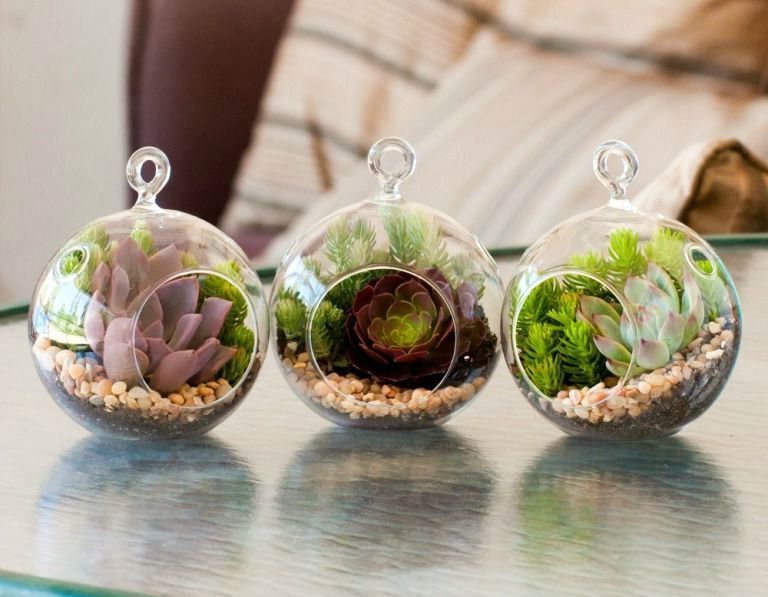 It is worth remembering that, as slowly as the plants did not grow, sooner or later it would become tight in a small container. Then the flowers can be transplanted into pots, and the florarium filled with a new composition.
It is worth remembering that, as slowly as the plants did not grow, sooner or later it would become tight in a small container. Then the flowers can be transplanted into pots, and the florarium filled with a new composition.
Types of florariums
Florarium, in fact, imitates naturalhabitats of selected plants. Therefore, to create a fllorarium with their own hands, it is necessary, relying on the climatic belt and habitat. Do not put in one terrarium ferns of moist forests and succulent from the desert. For each species of florarium needs its own regime of watering, ventilation and temperature, so that the whole plant composition does not die. Let's look at the three main types of florariums. Florarium "Tropical Rainforests" The basis of the compositions are tropical rain forests with a huge variety of plants, for example, rain forests of the Amazon, wet forests of Southeast Asia, Atlantic equatorial coastal forests. Even in a miniature container, one can recreate the likeness of multilevel selva forests, using plants of different heights. It is important that the foreground composition remains open, giving the opportunity to see all the tiers. Although the image of the rainforest is created, mainly, visually, using plants that are freely available in flower shops. It is not necessary to look for rare tropical species. The main condition for the selection of plants for the composition is similar requirements to the soil, moderate growth and the need for high relative humidity. The soil is preferably used in a complex composition, with an admixture of coarse sand, leaf earth, peat. To maintain high humidity, you can install a small cup of water in the vessel and decorate it, put a small snag, pulled out of the water. 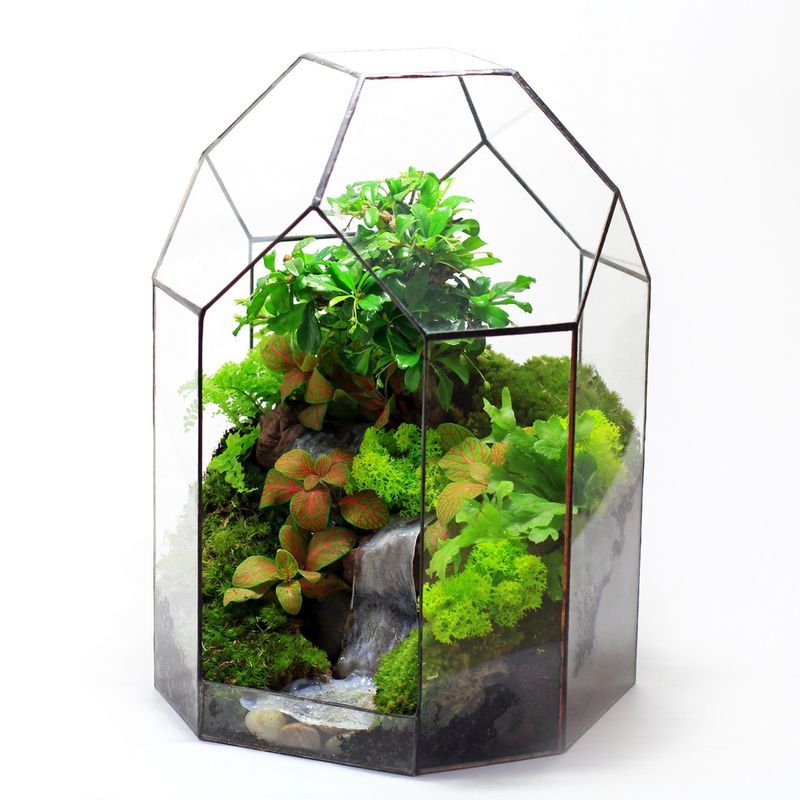 Plants: ivy common, asparagus, pygmy ficus, ayr, begonias, miniature ferns, croton, phytonia, hamedorrhea, selaginella, some bamboo species with moderate growth. Care. Care for the compositions with plants in the humid tropics is largely reduced to keeping the container in optimum moisture and temperature. The humidity level is 70-85%, the temperature is at least 25 ° C, frequent watering or spraying in very dry apartment air or using an open terrarium.
Plants: ivy common, asparagus, pygmy ficus, ayr, begonias, miniature ferns, croton, phytonia, hamedorrhea, selaginella, some bamboo species with moderate growth. Care. Care for the compositions with plants in the humid tropics is largely reduced to keeping the container in optimum moisture and temperature. The humidity level is 70-85%, the temperature is at least 25 ° C, frequent watering or spraying in very dry apartment air or using an open terrarium. 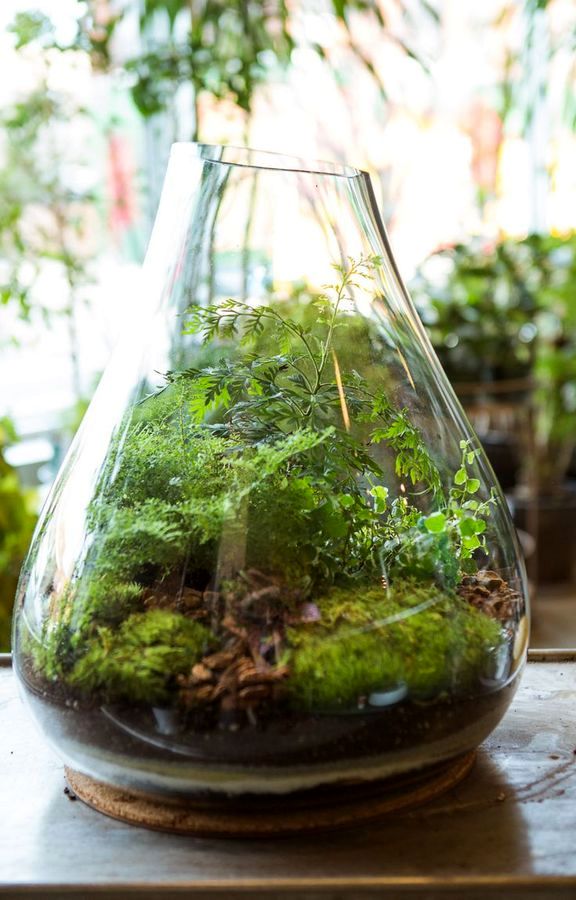 Florarium "Semi-desert" If you do not have anytime, no desire to monitor the humidity in the terrarium, often water and feed the soil, it does not matter, there are plants that do not need a thorough care. We are talking about the inhabitants of deserts and semi-deserts - a group of plants under the general name succulents. And although it is believed that florariums are suitable only for tropical plants, succulents feel in containers is also good. For them, it is convenient to use open terrariums and vessels without a narrowed neck. The soil can be formed from large and finely sieved sand, put a few stones, decorate with ceramic debris.
Florarium "Semi-desert" If you do not have anytime, no desire to monitor the humidity in the terrarium, often water and feed the soil, it does not matter, there are plants that do not need a thorough care. We are talking about the inhabitants of deserts and semi-deserts - a group of plants under the general name succulents. And although it is believed that florariums are suitable only for tropical plants, succulents feel in containers is also good. For them, it is convenient to use open terrariums and vessels without a narrowed neck. The soil can be formed from large and finely sieved sand, put a few stones, decorate with ceramic debris.  Plants: all kinds of succulents of the original form - young, agave, adromiscus, beard, greens, dikia, calanchoe, malefore, spurge, euphorbia, various kinds of cacti. Care. Watering should be done as the soil dries. In the period of growth, from spring to autumn, it is enough once a week - one and a half, and in winter - once every three to four weeks. If you went on vacation for a couple of weeks - do not worry, the plants will meet you in the same impeccable way. Succulents prefer a moderate room temperature, in winter even cool - 13-15 ° C. The sun's rays are needed, so it's justified to place on the windowsills.
Plants: all kinds of succulents of the original form - young, agave, adromiscus, beard, greens, dikia, calanchoe, malefore, spurge, euphorbia, various kinds of cacti. Care. Watering should be done as the soil dries. In the period of growth, from spring to autumn, it is enough once a week - one and a half, and in winter - once every three to four weeks. If you went on vacation for a couple of weeks - do not worry, the plants will meet you in the same impeccable way. Succulents prefer a moderate room temperature, in winter even cool - 13-15 ° C. The sun's rays are needed, so it's justified to place on the windowsills. 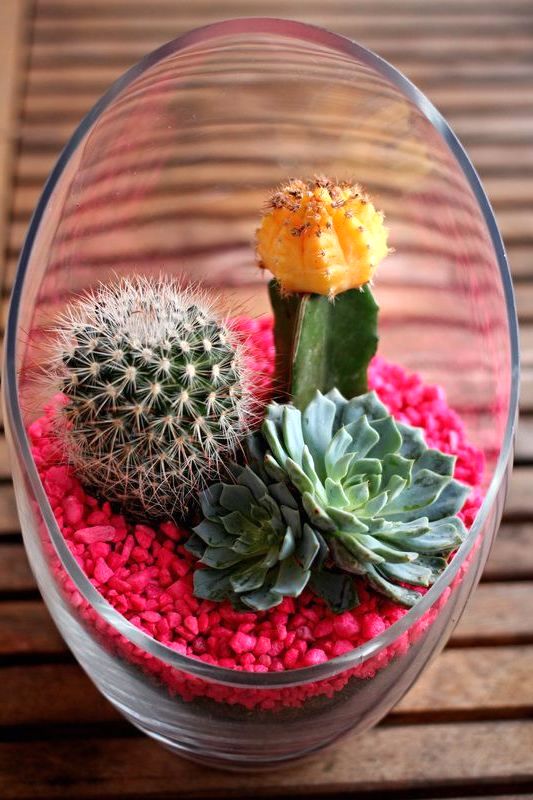 Florarium "Mountains" Mountain plants in plantterrariums can be conditionally divided into two types: inhabitants of high-mountainous rocky, semidesert plateaus and plants of forest foothills, including wet tropical forests. Therefore, the range of plants for a florarium with a mountain landscape is generally the same as for the other two species. Dry mountain areas are characterized by semideserts, and for forested mountains - inhabitants of moist forests. For rocky areas, the representatives of the Gesnerian - senpolia, as well as some climbing plants are specific. Again, depending on the chosen direction, the soil must be oily, saturated with organic matter and with good drainage or deserted, with large pebbles. Actively use large irregularly shaped stones, with sharp edges and chips that will mimic rocky protrusions and peaks.
Florarium "Mountains" Mountain plants in plantterrariums can be conditionally divided into two types: inhabitants of high-mountainous rocky, semidesert plateaus and plants of forest foothills, including wet tropical forests. Therefore, the range of plants for a florarium with a mountain landscape is generally the same as for the other two species. Dry mountain areas are characterized by semideserts, and for forested mountains - inhabitants of moist forests. For rocky areas, the representatives of the Gesnerian - senpolia, as well as some climbing plants are specific. Again, depending on the chosen direction, the soil must be oily, saturated with organic matter and with good drainage or deserted, with large pebbles. Actively use large irregularly shaped stones, with sharp edges and chips that will mimic rocky protrusions and peaks. 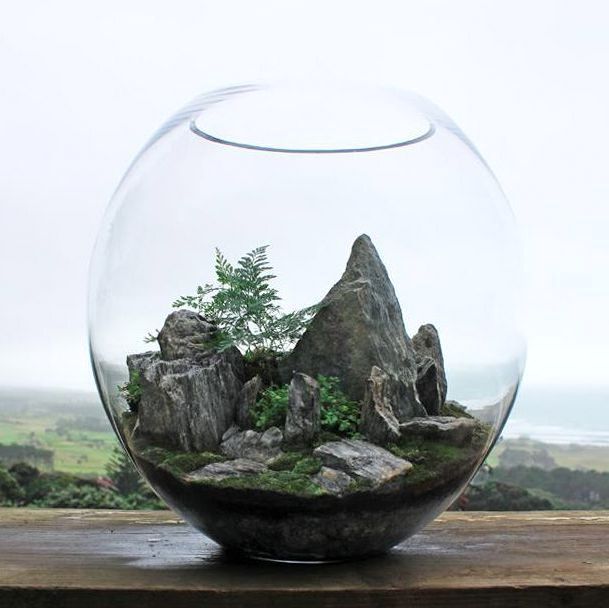 Plants: seleginella, ferns, ivy, senpolia, succulents, cacti. Care corresponds to either florariums with tropical plants, or with desert plants.
Plants: seleginella, ferns, ivy, senpolia, succulents, cacti. Care corresponds to either florariums with tropical plants, or with desert plants. 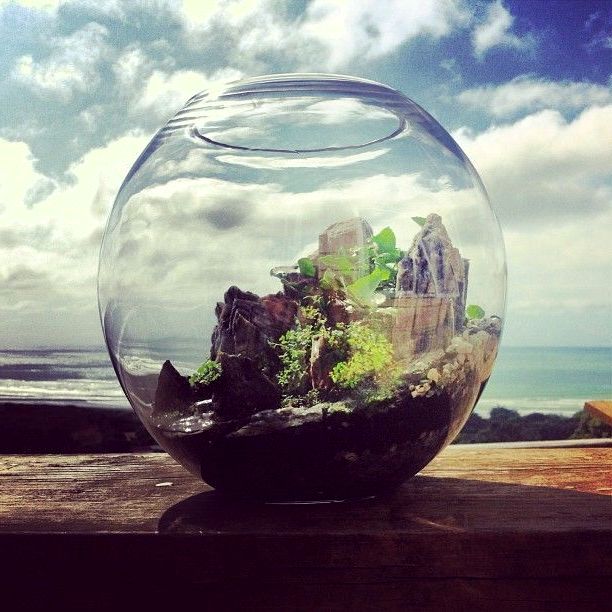 Floridium "Moss" Mosses - widespread in allcontinents department of plants, numbering more than 10 000 species! In nature, mosses grow in almost all climatic zones, often in very extreme conditions. Usually bryophytes form dense clusters in shady places, like humidity, so they can grow in close proximity to water. Although there are many species that feel great on sunny dry areas, and also in conditions of constantly low temperature. In florariums, moss is often an additional element covering open areas of the soil. But it is perfectly permissible to make a composition out of moss. To do this, you can either buy flower moss for landscape design and decor of indoor plants, for example, moss sphagnum, and also dig some kind of moss in the forest. It is desirable to cut only the upper part, without the rhizome, to allow the moss cover to recover. The composition with moss can include other plants, but try to make sure that they do not overlap and distract attention from the soft velvety coating. Moss is well sucked in acid soils, so you can purchase a special substrate for the moss in the store, which can be laid on top of the usual soil. With moss, florariums with a landscape of the forest of the temperate climatic zone are well received.
Floridium "Moss" Mosses - widespread in allcontinents department of plants, numbering more than 10 000 species! In nature, mosses grow in almost all climatic zones, often in very extreme conditions. Usually bryophytes form dense clusters in shady places, like humidity, so they can grow in close proximity to water. Although there are many species that feel great on sunny dry areas, and also in conditions of constantly low temperature. In florariums, moss is often an additional element covering open areas of the soil. But it is perfectly permissible to make a composition out of moss. To do this, you can either buy flower moss for landscape design and decor of indoor plants, for example, moss sphagnum, and also dig some kind of moss in the forest. It is desirable to cut only the upper part, without the rhizome, to allow the moss cover to recover. The composition with moss can include other plants, but try to make sure that they do not overlap and distract attention from the soft velvety coating. Moss is well sucked in acid soils, so you can purchase a special substrate for the moss in the store, which can be laid on top of the usual soil. With moss, florariums with a landscape of the forest of the temperate climatic zone are well received. 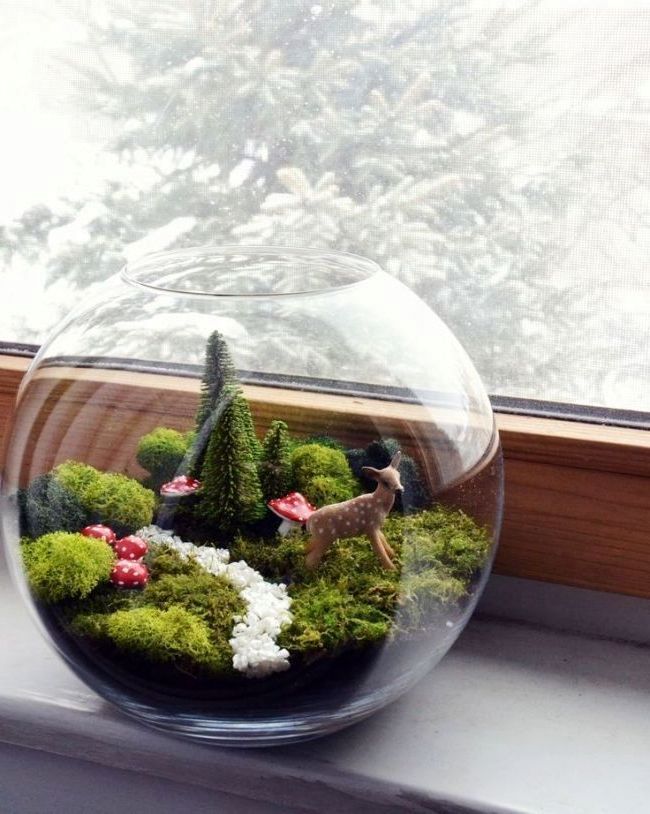 Care. Create conditions for the natural habitat of moss. Place in a florarium a container of water, often spray the entire composition.
Care. Create conditions for the natural habitat of moss. Place in a florarium a container of water, often spray the entire composition. 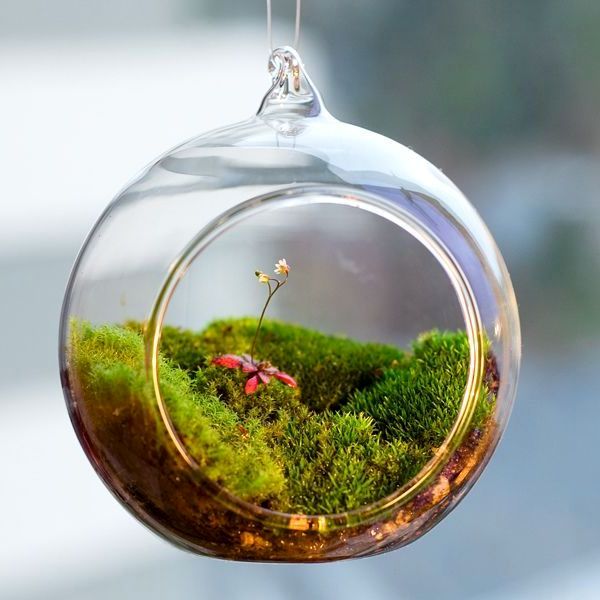
Master-class how to make a fllorarium by your own hands
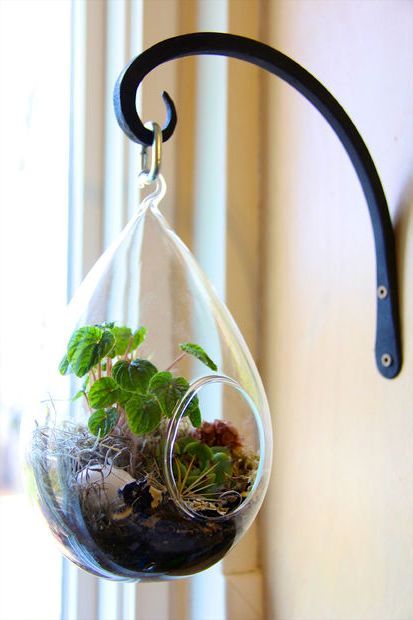 In order to make a florarium with their own hands, you will need:
In order to make a florarium with their own hands, you will need:
- glass container with or without lid (aquarium, vase, can)
- soil that corresponds to plants
- drainage (sand, small pebbles, expanded clay, broken brick)
- activated or charcoal
- plants
- decorative elements for decoration (figurines, houses, branches, driftwood)
- tools (scapula or spoon, tweezers long, sprayer, watering can, scissors)
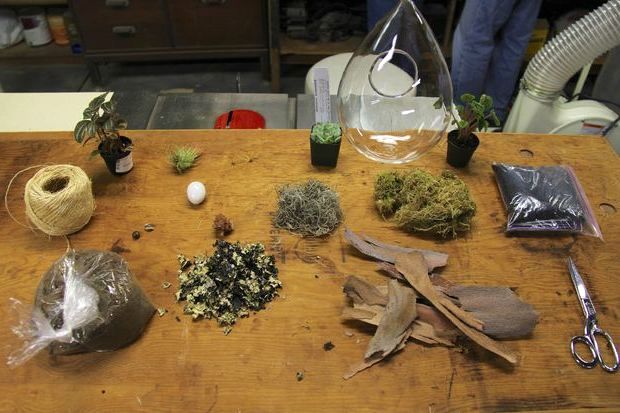 Prepare a container for planting plants. Well, wash it, pour it with boiling water. Pour a drainage layer 3-4 cm high. It can be expanded clay, coarse sand, pebbles, decorative pebbles for an aquarium and the like.
Prepare a container for planting plants. Well, wash it, pour it with boiling water. Pour a drainage layer 3-4 cm high. It can be expanded clay, coarse sand, pebbles, decorative pebbles for an aquarium and the like.  Put activated charcoal directly over the drainin tablets or crushed, fine charcoal can be used. This is necessary to absorb harmful chemicals coming from the water, preventing the appearance of mold and fungus. By the way, it is recommended to water and spray plants in the terrarium with filtered water.
Put activated charcoal directly over the drainin tablets or crushed, fine charcoal can be used. This is necessary to absorb harmful chemicals coming from the water, preventing the appearance of mold and fungus. By the way, it is recommended to water and spray plants in the terrarium with filtered water. 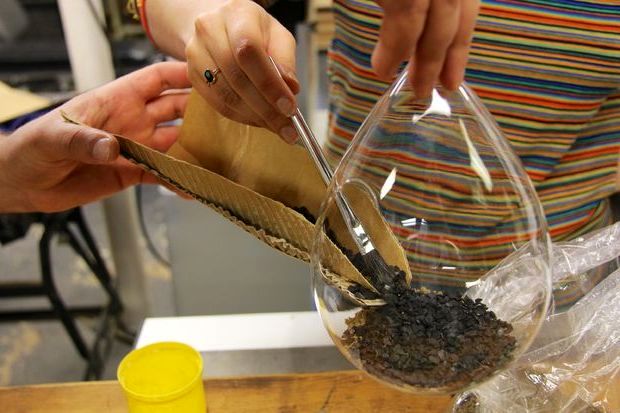 Top with a moist soil of 5-8 cm. By the way, the ground coal can be mixed with the soil, and not laid in a separate layer. For compositions with desert plants, sifted sand can be used, and for tropical plants - a ready-made substrate. For decorative design, soil layers can alternate with thin layers of colored sand.
Top with a moist soil of 5-8 cm. By the way, the ground coal can be mixed with the soil, and not laid in a separate layer. For compositions with desert plants, sifted sand can be used, and for tropical plants - a ready-made substrate. For decorative design, soil layers can alternate with thin layers of colored sand. 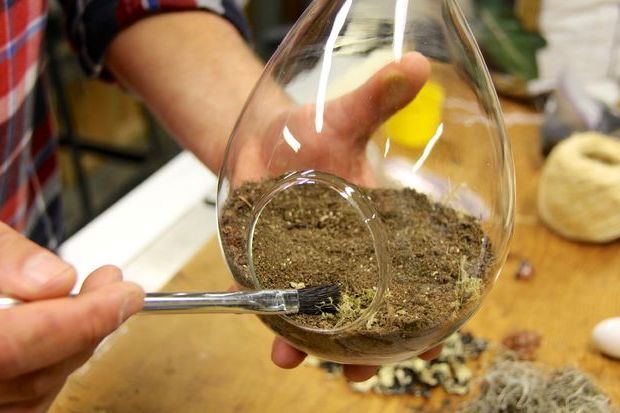 Smooth the soil, spoon make smalldepressions for plants. The plants themselves are pulled out of the pots, clean the roots. Using tweezers, carefully plant the plants, sprinkle the roots with soil. Make sure that the large leaves do not touch the walls of the container, otherwise condensation may accumulate on them and they will rot.
Smooth the soil, spoon make smalldepressions for plants. The plants themselves are pulled out of the pots, clean the roots. Using tweezers, carefully plant the plants, sprinkle the roots with soil. Make sure that the large leaves do not touch the walls of the container, otherwise condensation may accumulate on them and they will rot. 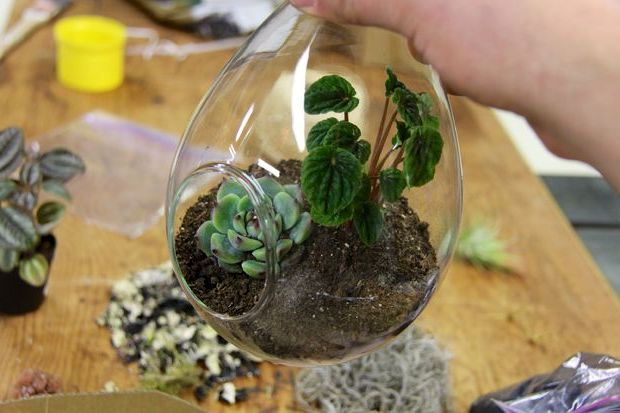 Planted plants should be sprayed gently from the sprayer. If the soil is not sufficiently moist, pour water from the watering can with a thin spout. Add decorative elements.
Planted plants should be sprayed gently from the sprayer. If the soil is not sufficiently moist, pour water from the watering can with a thin spout. Add decorative elements. 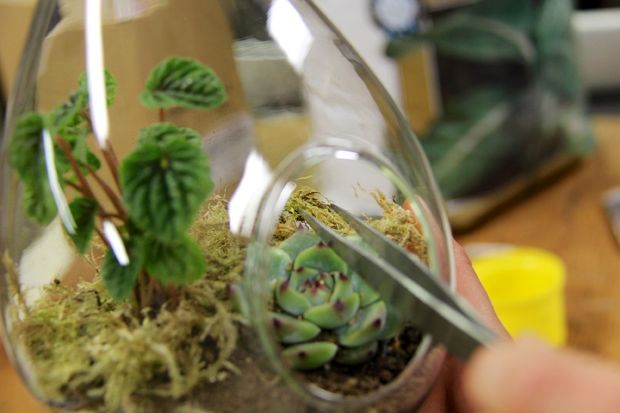 Here is another master class how to make a florarium in a bank. By the way, a wonderful joint lesson with the children!
Here is another master class how to make a florarium in a bank. By the way, a wonderful joint lesson with the children! 
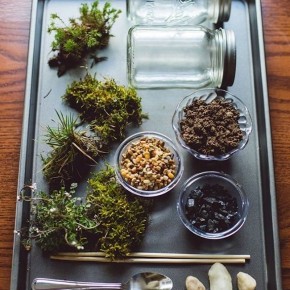

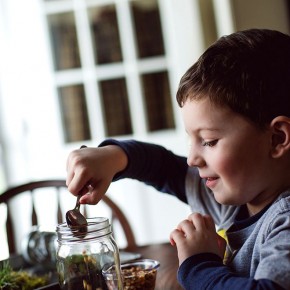
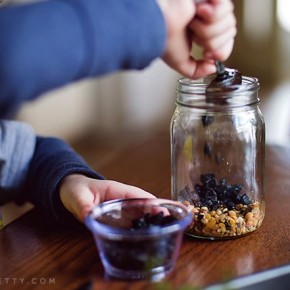
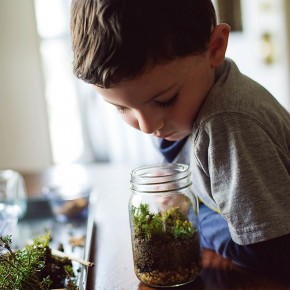
Photos of different types of florariums for inspiration




